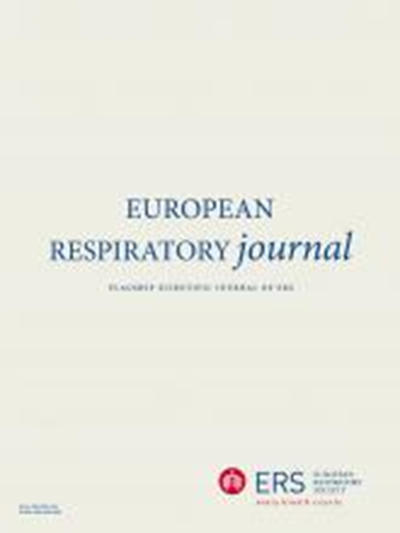Reduction of systemic inflammation by elexacaftor/tezacaftor/ivacaftor correlates with lung function improvement in cystic fibrosis.
IF 21
1区 医学
Q1 RESPIRATORY SYSTEM
引用次数: 0
Abstract
BACKGROUND Triple CFTR modulator therapy elexacaftor/tezacaftor/ivacaftor (ETI) rapidly improves airway and systemic inflammation in people with cystic fibrosis (CF). However, longitudinal effects on systemic inflammation and their relationship to lung function remain unknown. METHODS In this prospective, observational, multicenter study, we analyzed peripheral blood neutrophil counts, C-reactive protein (CRP) and six pro-inflammatory serum cytokines in a cohort of 198 people with CF aged 6 years and older at baseline (BL) and follow-up visits 3, 12, and 24 months after initiation of ETI, compared to 74 age-matched healthy control participants (HCs). RESULTS Neutrophil counts and CRP, G-CSF, IL-1β, IL-6, and IL-8 were reduced to 71%, 40%, 41%, 63%, 46%, and 81% of median BL values after 3 months of therapy already (all p<0.05), whereas MCP-1 reached 82% of BL levels at 12 months only (p<0.05). Change from BL to 3 months correlated with improvements in percent predicted forced expiratory volume (ppFEV1) for all systemic inflammation parameters except IL-8 (Spearman's r: -0.17 to -0.42, p<0.05). All cytokines reached HC levels at or before 24 months. Decreased inflammation levels were sustained until 24 months for all parameters (p<0.05) except IL-6. CONCLUSIONS Our results demonstrate that ETI exerts rapid and sustained effects on systemic inflammation associated with lung function improvements in children, adolescents and adults with CF in a real-world, post-approval setting. However, our data also show that individual markers of systemic inflammation remain at levels above those of HCs, particularly in certain sub-groups, suggesting persistence or resurgence of residual systemic inflammation.elexaftor /tezacaftor/ivacaftor减少全身炎症与囊性纤维化患者肺功能改善相关。
背景:三重CFTR调节剂治疗elexacaftor/tezacaftor/ivacaftor (ETI)可迅速改善囊性纤维化(CF)患者的气道和全身炎症。然而,对全身炎症的纵向影响及其与肺功能的关系尚不清楚。方法在这项前瞻性、观察性、多中心研究中,我们分析了198名6岁及以上CF患者的外周血中性粒细胞计数、c反应蛋白(CRP)和6种促炎血清细胞因子,这些患者在ETI开始后的基线(BL)和随访3、12和24个月,与74名年龄匹配的健康对照组(hc)相比。结果治疗3个月后,中性粒细胞计数和CRP、G-CSF、IL-1β、IL-6和IL-8分别降低到BL中位值的71%、40%、41%、63%、46%和81%(均p<0.05),而MCP-1仅在治疗12个月时达到BL中位值的82% (p<0.05)。从BL到3个月的变化与除IL-8外所有全身炎症参数的预测用力呼气量(ppFEV1)百分比的改善相关(Spearman's r: -0.17至-0.42,p<0.05)。所有细胞因子在24个月或之前达到HC水平。除IL-6外,所有指标均持续降低炎症水平至24个月(p<0.05)。研究结果表明,在批准后的现实世界中,ETI对儿童、青少年和成人CF患者肺功能改善相关的全身性炎症具有快速和持续的影响。然而,我们的数据还显示,全身炎症的个体标志物仍然高于hc的水平,特别是在某些亚组中,这表明残留的全身炎症持续存在或再次出现。
本文章由计算机程序翻译,如有差异,请以英文原文为准。
求助全文
约1分钟内获得全文
求助全文
来源期刊

European Respiratory Journal
医学-呼吸系统
CiteScore
27.50
自引率
3.30%
发文量
345
审稿时长
2-4 weeks
期刊介绍:
The European Respiratory Journal (ERJ) is the flagship journal of the European Respiratory Society. It has a current impact factor of 24.9. The journal covers various aspects of adult and paediatric respiratory medicine, including cell biology, epidemiology, immunology, oncology, pathophysiology, imaging, occupational medicine, intensive care, sleep medicine, and thoracic surgery. In addition to original research material, the ERJ publishes editorial commentaries, reviews, short research letters, and correspondence to the editor. The articles are published continuously and collected into 12 monthly issues in two volumes per year.
 求助内容:
求助内容: 应助结果提醒方式:
应助结果提醒方式:


